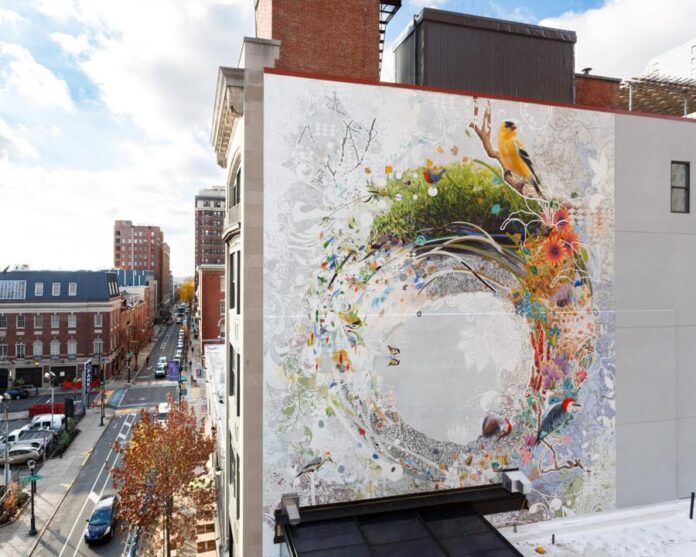Public art has long been recognized as a community asset, but because many of its benefits seem intangible, it is often treated as a low priority, especially during challenging economic times. Yet, several communities across the U.S. have shown that prioritizing public art can lead to increased levels of community engagement and social cohesion.
The Mural Arts Program is a public-private partnership between the city of Philadelphia and the Philadelphia Mural Arts Advocates, which creates transformative murals within communities across the city. One of its key initiatives, the Porch Light Program, uses public art to promote health and wellness in Philadelphia. The program organizes participatory mural making with local organizations to create venues where people with and without behavioral health challenges can work alongside one another to reveal a shared purpose.
Porch Light is collaborating with the Yale School of Medicine to assess the program’s impact on health outcomes. After two years, researchers found a sustained increase in collective efficacy and improved perceptions of both the pedestrian environment and neighborhood safety. They also observed a decrease in stigma toward individuals with mental health or substance abuse challenges.
Whether driven by the community or municipal agencies, public art moves beyond improving aesthetic quality within neighborhoods, by reinforcing social connections, fostering improved health outcomes.
Analysis:
Public art is a method used to strengthen communities and has proven to make residents feel safer and more socially connected. Concepts from programs like the Porch Light Program could be implemented as a way of meaningfully impacting an aging community and help foster social connections.
“Strengthening Communities Through Public Art.” Strengthening Communities through Public Art, centerforactivedesign.org/publicart-engagement.




